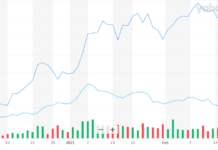John Petersen
“A man’s got to know his limitations …“
Inspector Harry Callahan
Magnum Force, 1973
Last Thursday the Department of Energy kicked-off a new effort “to develop its first-ever strategic plan for addressing the role of rare earth and other materials in energy technologies and processes” by issuing a Request for Information on resource availability and supply chain security. The information categories covered include short- and long-term:
- Demand forecasts for energy applications and competing issues;
- Supply issues including investment trends, processing requirements and future research;
- Technology applications, required quantities and purities, processes and innovation;
- Costs, availability and impact on energy application costs;
- Substitutes for constrained materials;
- Recycling opportunities, capacities and challenges;
- Intellectual property constraints; and
- Additional information.
While it’s unsettling to learn that the DOE has adopted major policy initiatives in the past without truly understanding the raw material supply chains needed to support them (think corn ethanol), even a belated recognition that resource constraints matter is better than blind adherence to the presumption of plenty – the blind faith that all life’s necessities and most of its luxuries will be available in quantities that are limited only by borrowing power.
A recurring theme in my writing is that six billion people are working very hard to earn a small piece of the lifestyle that 600 million of us have and often take for granted, and that the greatest challenge of this century will be finding relevant scale solutions to persistent shortages of water, food, energy and every imaginable commodity. The challenge is even greater in alternative energy because so many green technologies are voracious users of scarce raw materials.
At a recent conference in Shanghai my friend and colleague Jack Lifton presented a table that summarized global mineral production over the last five years. The following is an abbreviated version that focuses on key minerals for alternative energy, shows annual production for the last five years in thousands of metric tons, and calculates our per capita share of mineral production in 2009 based on a global population of 6.8 billion people.
| MINERAL | 2005 | 2006 | 2007 | 2008 | 2009 | Per Capita |
| Crude Oil |
4,208,310.0 |
4,206,900.0 |
4,201,300.0 |
4,249,550.0 |
4,189,210.0 |
616 kg |
| Raw Steel |
1,130,000.0 |
1,170,000.0 |
1,340,000.0 |
1,330.000.0 |
1,100,000.0 |
162 kg |
| Aluminum | 31,900.0 | 33,100.0 | 38,000.0 | 39,000.0 | 36,900.0 | 5.4 kg |
| Copper | 15,000.0 | 15,100.0 | 15,400.0 | 15,400.0 | 15,800.0 | 2.3 kg |
| Lead | 3,520.0 | 3,650.0 | 3,770.0 | 3,840.0 | 3,900.0 | 1.6 kg |
| Nickel | 1,460.0 | 1,560.0 | 1,660.0 | 1,570.0 | 1,430.0 | 570 g |
| Cobalt | 58.6 | 63.4 | 65.5 | 75.9 | 62.0 | 201 g |
| Uranium | 41.5 | 39.3 | 40.7 | 42.7 | 6 g |
|
| Lanthanum | 32.5 | 32.9 | 32.9 | 32.9 | 32.9 | 5 g |
| Silver | 20.8 | 20.4 | 21.1 | 21.3 | 21.4 | 3 g |
| Neodymium | 18.9 | 19.1 | 19.1 | 19.1 | 19.1 | 3 g |
| Cadmium | 20.1 | 19.9 | 19.4 | 19.6 | 18.8 | 3 g |
| Lithium | 21.5 | 24.4 | 25.8 | 25.4 | 18.0 | 3 g |
I have a hard time reviewing global mineral production statistics and accepting the proposition that it will ever make sense to use a 170 kg lithium-ion battery pack in a GM Volt or a 200 kg battery pack in a Nissan Leaf. The bulk of the weight may be relatively plentiful steel, copper and aluminum, but even eight to twelve kg of lithium is massive for a non-recyleable product in a world that only produces three grams of lithium per person. While companies like FMC Corporation (FMC) and Chemical & Mining Co. of Chile (SQM) can significantly increase their production if enough money and time are spent developing new mines, there is no meaningful chance that electric vehicles will ever reach “relevant scale” using current technology. Under the circumstances, I have to wonder whether a lithium-ion business model that depends on substantial short-term cost reductions isn’t at least a little optimistic. The bottom line seems to be that we’ve forged an energy policy without questioning our assumptions and are destined for disaster when the engine of gee-whiz technical feasibility hits the brick wall of natural resource constraints.
The battery industry has known for years that NiMH chemistry was seriously constrained by the availability of the rare earth metal Lanthanum. Over the next couple years we will have to come to grips with the fact that even more daunting constraints are looming for the rare earth metal Neodymium, which is essential for the permanent magnets used in both wind turbines and electric motors. Similar issues exist for a host of other scarce raw materials. At some point in the not too distant future we’re going to have to identify the highest and best uses of these scarce raw materials and make hard decisions based on economic reality rather than technical feasibility. The RFI is a good first step.
For as long as I’ve been practicing securities law a risk factor on raw materials availability has been standard disclosure that all companies included in their SEC filings and most investors dismissed as legal boilerplate. I’m the first to admit that the disclosures were overkill when I was younger. Today the risks are grave and investors who gloss over raw material and supply chain issues do so at their peril.
In recent articles I’ve shown how plug-in vehicles are unconscionable waste masquerading as conservation and the less glamorous solution of Prius class HEVs is six times more efficient at using batteries to reduce fuel consumption and CO2 emissions. I’ve also shown why cheaper and simpler efficiency technologies based on readily available materials strike me as a better investment from both a timing and market acceptance perspective.
Over the next few weeks I’ll be working closely with Jack Lifton and Gareth Hatch to analyze some of the critical resource constraints in greater depth and provide more specific guidance to investors. It looks like we’re entering an era where the environmentalists may have to make peace with the miners. It should be interesting.
Disclosure: Author has no interest in the companies mentioned.









I think in the future both renewable energy and energy storage technologies that would succeed would use material which are abundant/easily availabe like silicon.Despite the demise predicted of silicon modules at the hand of CIGS,CDTe and other thin film technologies,I think silicon modules will continue to thrive.
Plentiful raw materials can lose a lot of ground if they need to be heavily processed to be useful. Unfortunately silicon is definitely in that class.
Tellurium is one of the scarcest metals on the planet and even my friend Jack is afraid to venture a guess at production rates that seem to be measured in the hundreds of kilograms worldwide.